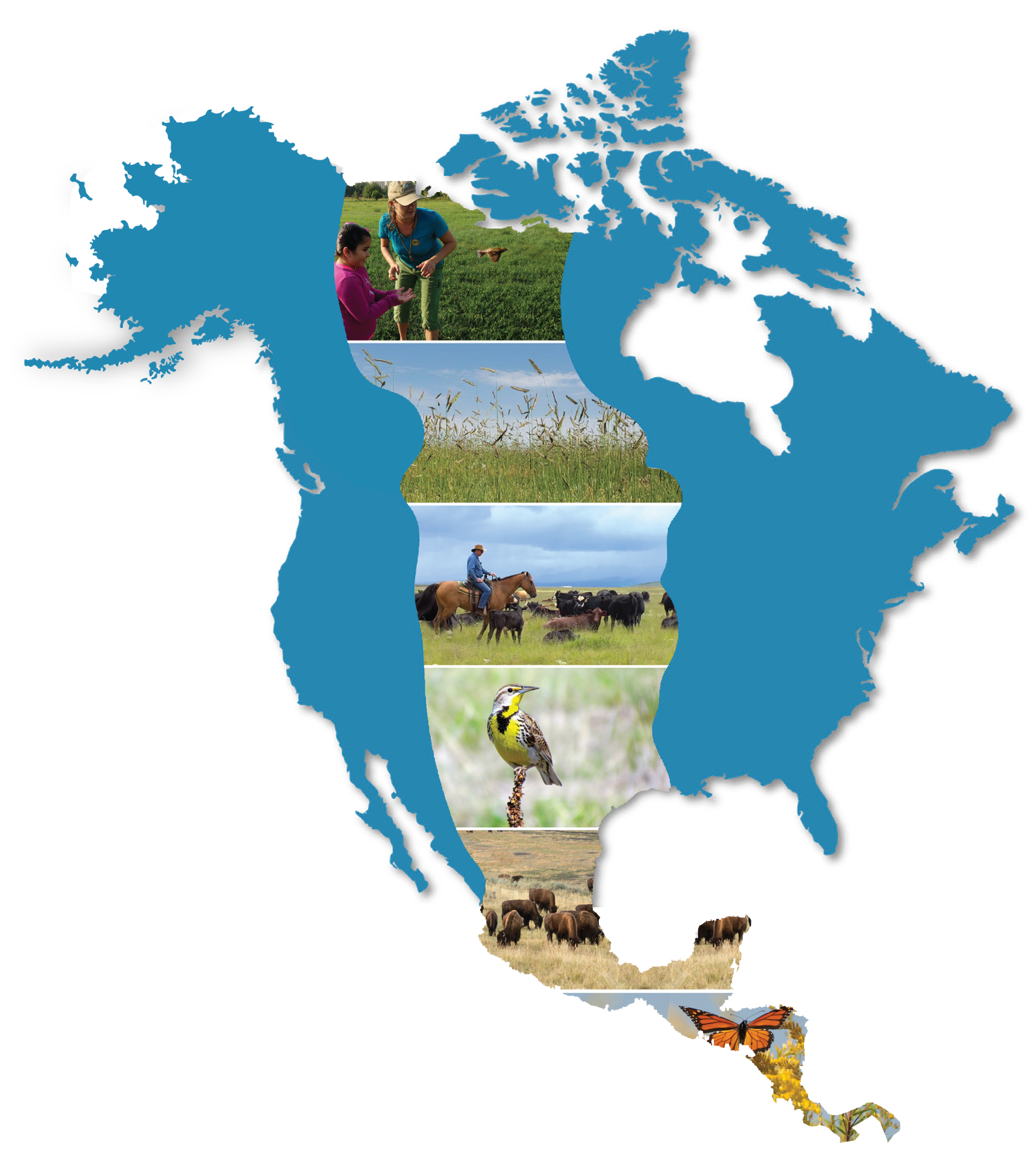Summary of Central Grasslands Roadmap Summit ~ Session 2
Thursday, July 16th, 12:00pm - 2:00pm MDT
Panel 1: Perspectives from Sectors
Regenerative Agriculture and Bird Conservation by Jim Eckberg, General Mills
Grasslands occur in a “matrix of other habitats,” General Mills works in crop production, sourcing oats, wheat, and dairy across Great Plains. Reliance on monocultures, pesticides, tillage has led to loss of biodiversity. GM is committed to advance “regenerative agriculture” on 1,000,000 acres by 2030. Regenerative ag. revolves around 5 principles: minimizing soil disturbance, maximizing crop diversity, keeping soil covered, keeping living roots in ground year-round, and integrating livestock. Bird conservation is a key indicator of regenerative ag. success. GM has established pilots for breeding bird success, guiding specific responses and management guidance.
The Power of Partnerships by Kari Gibson, ConocoPhillips
Commitment to stewardship is essential to ConocoPhillips’s “license to operate.” Employees “play” in and enjoy the lands in which they produce oil and gas. ConocoPhillips works with strategic partners to advance conservation: partnered with National Fish and Wildlife Foundation, Smithsonian, US Fish and Wildlife Service. Conservation efforts cannot be siloed: where can we divert our efforts to receive the most in return? The Sage Grouse Initiative utilized the Farm Bill to target lands where sage grouse were most prosperous. Democrats and Republicans alike represent communities across the grasslands, and collaboration here can be another “success story.”
NFWF Grasslands Strategy by Holly Bamford, National Fish and Wildlife Foundation
NFWF is a 501(c)(3), but chartered by the federal government. It can create relationships with federal sector, but fundraises with non-federal entities. NFWF doesn’t directly coordinate projects, but invests in projects with 18,670 current investments across 5,000 organizations. NFWF grants are interconnected. We must identify priority landscapes/species through science-driven strategies, leveraging funding partnerships, conservation impact through partners, an defining measurable outcomes. We need to intersect economic drivers and stakeholders with communities on the ground. NFWF operates with a Business Plan developed 4 years ago featuring full life-cycle investments that are critical to prioritizing and targeting efforts.
The JV8 Initiative by Mike Carter, Joint Ventures
JV8 represents 72 management board entities at the landowner, local, state, federal, and NGO levels. It is our responsibility as North Americans to save our endemic birds. Takeaways for JV8 Planning Initiative: scale up what works, develop what’s missing, learn from others, foster regional to local solutions, right-size acres and funding, keep people on landscape, and capitalize on a tri-national framework. Maintain habitat through land management, removal of invasive species, prescribed fire, and overall restoration. Prioritize win-win approaches, right-sized funding, and fully-functional planning, implementation, and evaluation cycles.
Panel 2: Tri-National and Indigenous Perspectives
Nick Hernandez, Makoce Agriculture Development - 1:13pm
Nick is Director of Makoce Agriculture Development on Pine Ridge Indian reservation. “Makoce” means homeland in his native tongue. Makoce focuses on agriculture and food systems development in Indian country. Nick offered a history behind the need for food sovereignty/security. Much of their land is undisturbed, natural grassland. Indigenous used to have sustainable economy, need to revitalize and reconnect to that lifestyle. Intent of Makoce is to connect communities to develop and rebuild these food systems: they are trying to combine modern technologies and concepts with old methods. Now is the time to reconnect, especially in the midst of a pandemic.
Acciónes de conservación y manejo sustenable de pastizales en ANP del Norte de México by Maria Elena Rodarte, Comisión Nacional de Áreas Naturales Protegidas - 1:25pm
Maria is the Director of the North and Western Sierra Madre Region of the National Commission of Protected Natural Areas. Grasslands have benefited humans mostly in the form of global crops such as corn, rice, and wheat, but also provide indispensable ecosystem services such as carbon sequestration, desertification prevention, maintenance of nutrients. It’s estimated that 80% of grasslands of DCH are degraded due to urbanization, agriculture, and invasive species. Recuperation of species mainly includes reintroduction, monitoring, and land management.
Roadmap to Here Christian Artuso, Canadian Wildlife Service
We will lose larger ecosystem purpose if we don’t work tri-nationally. CWS is struggling to get buy-in and support: people used to either farm or protect habitat, now we need to do both. Canada does not have equivalent of the Farm Bill, but is heavily invested in sectoral strategies instead. When encountering frustration, remember past mistakes and recognize the need to bring in the community. You can work very hard to achieve biodiversity at a small scale, but you may detriment large-scale biodiversity in the process, we need to consider the complexity of the full picture in this process. Christian also cited, connected and summarized key points from several other speaker to date.
